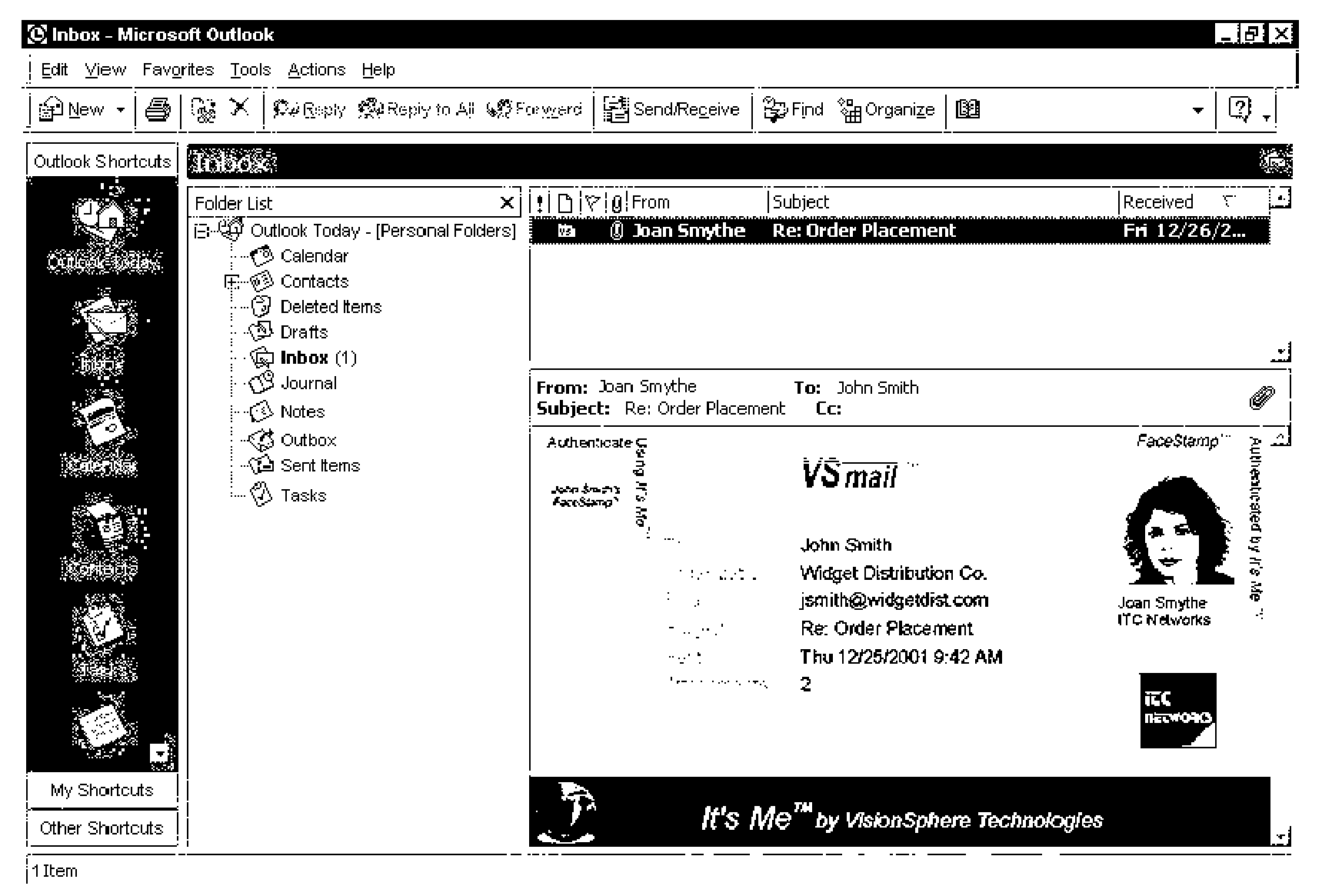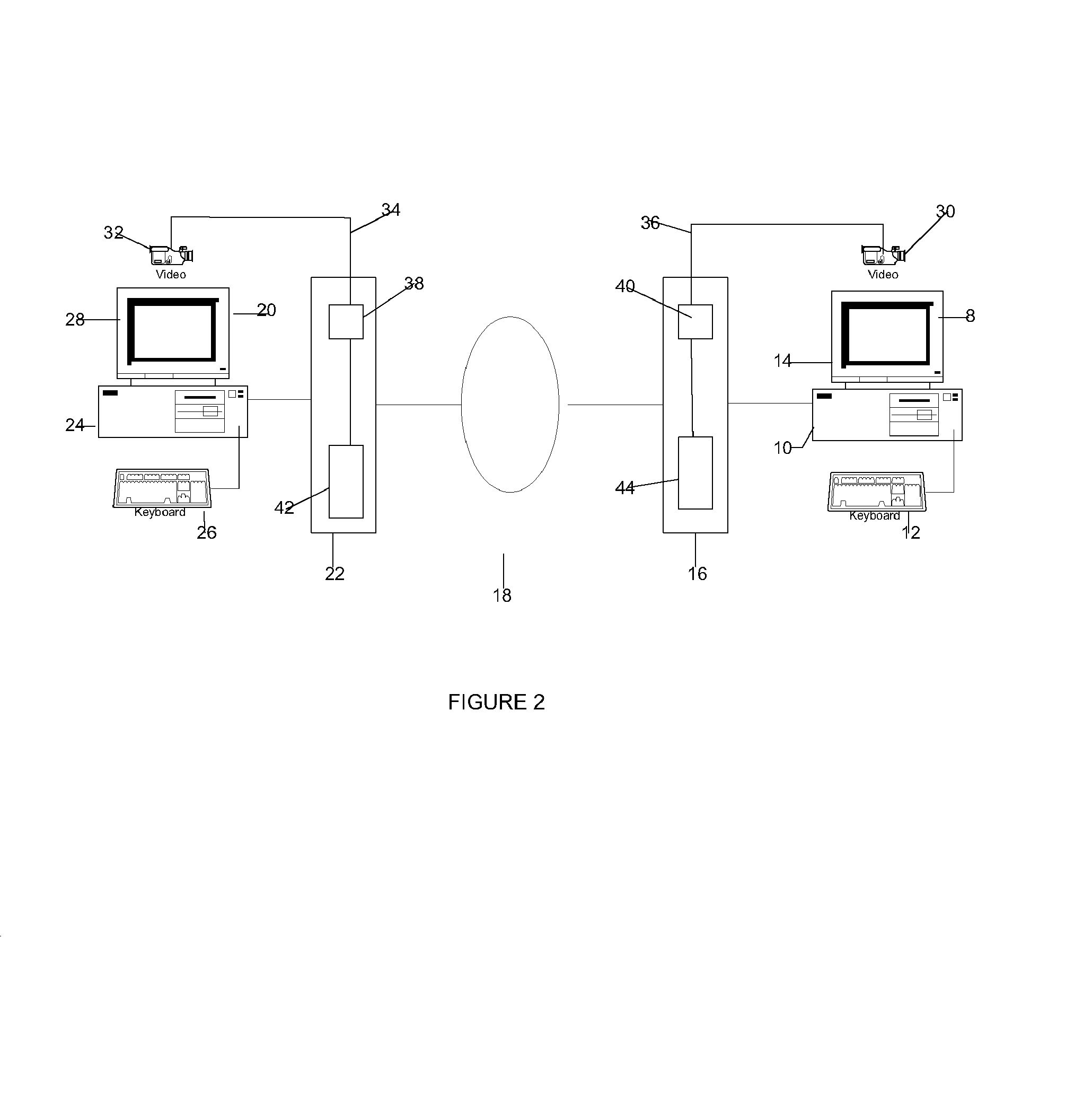System for transmitting secure data between a sender and a recipient over a computer network using a virtual envelope and method for using the same
a computer network and secure data technology, applied in data switching networks, program control, instruments, etc., can solve problems such as inability to provide the adequate level of security necessary to transmit sensitive information relating to corporate activities over such networks, password theft or decryption, and information security and integrity can be corrupted over electronic messaging systems
- Summary
- Abstract
- Description
- Claims
- Application Information
AI Technical Summary
Benefits of technology
Problems solved by technology
Method used
Image
Examples
Embodiment Construction
[0044]A simplified computer network is shown in FIG. 1. Such a network might exist between two offices within the same building or in different cities. The network comprises a first station (8) comprising a computer (10) having a keyboard (12) and a monitor (14). The computer (10) is connected to a local server (16) that moderates incoming and outgoing flows of data messages. The server is connected to a network of computers (18). The network could be the World Wide Web (Internet), a local area network (LAN) or a wide area network (WAN). A second station (20) comprising a computer (24), keyboard (26) and monitor (28) are also connected to the network (18) through server (22). In a typical corporate network there may be hundreds of workstations connected to the network (18). Data may be communicated between workstations relatively easily using commercially available electronic mail applications such as Microsoft™ Outlook™. Many other types of applications are available for home or co...
PUM
 Login to View More
Login to View More Abstract
Description
Claims
Application Information
 Login to View More
Login to View More - R&D
- Intellectual Property
- Life Sciences
- Materials
- Tech Scout
- Unparalleled Data Quality
- Higher Quality Content
- 60% Fewer Hallucinations
Browse by: Latest US Patents, China's latest patents, Technical Efficacy Thesaurus, Application Domain, Technology Topic, Popular Technical Reports.
© 2025 PatSnap. All rights reserved.Legal|Privacy policy|Modern Slavery Act Transparency Statement|Sitemap|About US| Contact US: help@patsnap.com



